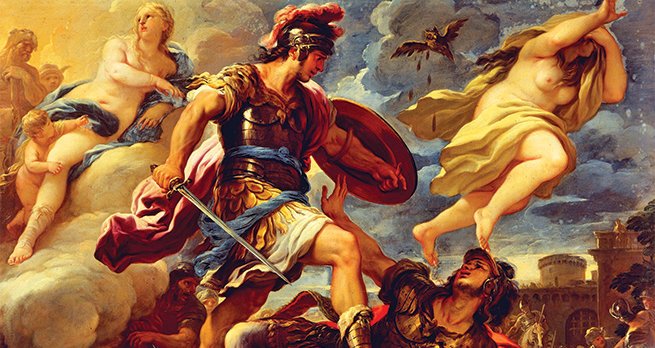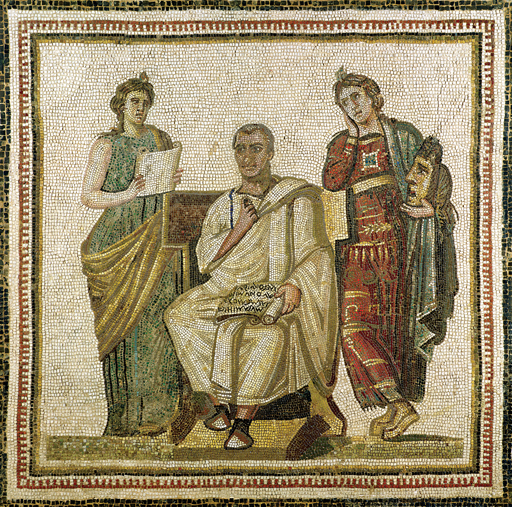1.1 Epic poetry before Virgil
To an educated Roman, epic poetry was a Greek invention, and its most famous examples were Homer’s Iliad and Odyssey, which told stories of the Greek heroes involved in the Trojan War. Although early Italians may well have had their own native traditions of heroic song, no traces of these survive, and the earliest attempt to write epic poetry in Latin was a translation of the Odyssey into the Latin language by Livius Andronicus in the mid third century bce. Although only fragments of this survive, the fact that Livius chose to translate a Greek epic poem shows the strong association between the genre and Greek culture. However, it wasn’t long before Roman poets began to tell the stories of their own society. The first to do so was Naevius, who wrote a poem on the Punic War with Carthage (also in the third century bce), followed by the second-century-bce poet Ennius, whose Annals told the history of Rome to his own day, though as with Livius, only fragments of these are preserved. However, Virgil’s masterpiece, the Aeneid, eclipsed both these poems, becoming the greatest example of Latin epic and a cornerstone of Roman identity, which has continued to inspire writers and artists for over two thousand years.

